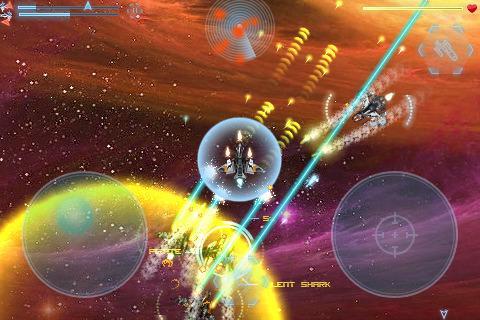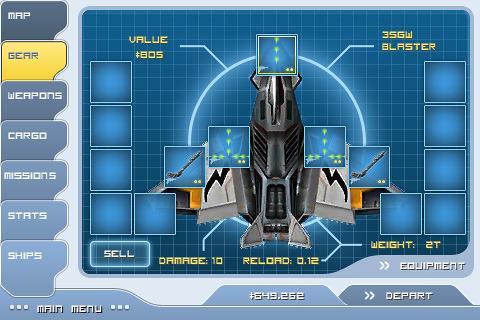- Wondering how to get Monopoly GO! free rolls? Well, you’ve come to the right place. In this guide, we provide you with a bunch of tips and tricks to get some free rolls for the hit new mobile game. We’ll …
Best Roblox Horror Games to Play Right Now – Updated Weekly
By Adele Wilson
Our Best Roblox Horror Games guide features the scariest and most creative experiences to play right now on the platform!The BEST Roblox Games of The Week – Games You Need To Play!
By Sho Roberts
Our feature shares our pick for the Best Roblox Games of the week! With our feature, we guarantee you'll find something new to play!Type Soul Clan Rarity Guide – All Legendary And Common Clans Listed!
By Nathan Ball
Wondering what your odds of rolling a particular Clan are? Wonder no more, with my handy Type Soul Clan Rarity guide.
Ultraviolet Dawn Review
Spacefaring games are enjoying a renaissance on the iPhone and iPod Touch lately, and Ultraviolet Dawn is a promising new contender, set to challenge the likes of WarpGate. While the trading and mercantile RPG aspects are awfully familiar, Ultraviolet Dawn keeps one foot squarely in classic territory, eschewing 3D graphics for strictly top-down 2D sprites. In this sense it is the closest to the original inspirations, but also suffers somewhat from being ported to a touch screen interface.

Ultraviolet Dawn Review
Spacefaring games are enjoying a renaissance on the iPhone and iPod Touch lately, and Ultraviolet Dawn is a promising new contender, set to challenge the likes of WarpGate. While the trading and mercantile RPG aspects are awfully familiar, Ultraviolet Dawn keeps one foot squarely in classic territory, eschewing 3D graphics for strictly top-down 2D sprites. In this sense it is the closest to the original inspirations, but also suffers somewhat from being ported to a touch screen interface.
In terms of pedigree, much of what I wrote in our review of WarpGate applies here: this is another spiritual descendent of games like Escape Velocity, which puts the player in the role of a lonely starship pilot, cast loose in the galaxy.

A brief introductory message sets the stage: this is a truly open universe, with nary a restriction on what you can see or do, aside from fuel limits. Dozens of star systems and enemies await you in the great beyond, and it is entirely up to the player to decide how to proceed: do I go the mercantile route, to buy low in one system and sell high in another? Go hijack a big cruiser and sell the cargo? Accept dangerous missions for fun and profit? It’s up to you. The problem with this approach arises when it becomes obvious that this rhetorical “open world” sleight-of-hand is actually code for “we didn’t really program any sort of plot into this thing”. So after you are given the keys to your first spaceship and a metaphorical smack on the butt, off you go to the interstellar map to plot your course.
But… to where? There lies the problem. Ultraviolet Dawn does a lousy job of giving the player the necessary training wheels in order to get going. There are no in-between character vignettes or conversations as in WarpGate, which help to gingerly ease the player into the fray. No, you get a dialog box and a map, and a big cluster of tab buttons that say things like Gear and Missions, and that’s pretty much it. The game throws you into the deep end without so much as a suggestion to swim. This can be jarring, even to a player who knows exactly how these games work.
In this sense, the enormity of the game’s universe, the wonderfully diverse selection of weaponry, customization options, and ships actually works against the game. There is a distinct lack of clues that makes hopping between missions a chore-like task. How do I know if a commodity is cheap in this system relative to others? How do I even know where to fly for the mission I accepted?

Using the now ubiquitous “virtual thumbtack” controls, the player pilots the ship with left and right thumbs on generously-sized circles in the lower right and left corners of the screen. This method works well for what it is. As with other iPhone games this scheme can be problematic, as your thumbs obscure a good portion of an already-small screen, making it hard to see objective arrows or other enemies should they happen to be near the lower edges of the display.
Unlike WarpGate, however, the combat actually involves a bit of honest-to-god flying – albeit mostly in tight circles, resembling no space physics that I am aware of. Because the game is 2D, what you are playing is essentially a very colourful scrolling version of Asteroids. You may find yourself instantly beset, as I did, leaving a station with my cargo and the best of intentions, only to be lit up by a marauding phalanx of space jerks. I fired back of course, but in the heat of melee I accidentally tagged a Police ship nearby, who also promptly began raining electric death on my benighted vessel. (I couldn’t help but notice that those cops weren’t doing much to help me while I was being pulverized.) This is a real problem with the combat – the view is too tight and the radar too tiny. Ships go off-screen all the time. Furthermore, the universe is fairly crowded in Ultraviolet Dawn, so the odds of you accidentally starting several fights while defending yourself are high indeed.
The good news about Ultraviolet Dawn is that its major shortcomings are fixable. There is a very respectable, core game that provides some nice moments: the battles run fluidly and are intense; the universe is huge; and developers Sad Cat Software have a great grasp on the classic aesthetics of “computer” space. The first time you cruise over a ship that is about four iPhone screens long, you can’t help but smile. The developers need to iterate on the game and provide some desperately-needed player cues to make exploration and missions easier to track, as well as some alternate control schemes and proper iOS integration in order to lift Ultraviolet Dawn from its current level to the next.

The good

The bad
More articles...
Monopoly GO! Free Rolls – Links For Free Dice
By Glen Fox
Wondering how to get Monopoly GO! free rolls? Well, you’ve come to the right place. In this guide, we provide you with a bunch of tips and tricks to get some free rolls for the hit new mobile game. We’ll …Best Roblox Horror Games to Play Right Now – Updated Weekly
By Adele Wilson
Our Best Roblox Horror Games guide features the scariest and most creative experiences to play right now on the platform!The BEST Roblox Games of The Week – Games You Need To Play!
By Sho Roberts
Our feature shares our pick for the Best Roblox Games of the week! With our feature, we guarantee you'll find something new to play!Type Soul Clan Rarity Guide – All Legendary And Common Clans Listed!
By Nathan Ball
Wondering what your odds of rolling a particular Clan are? Wonder no more, with my handy Type Soul Clan Rarity guide.







